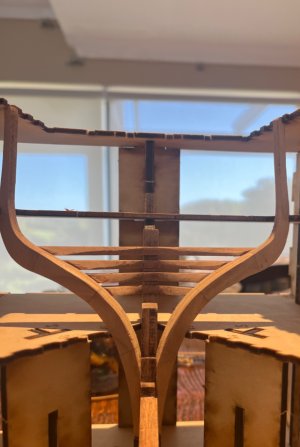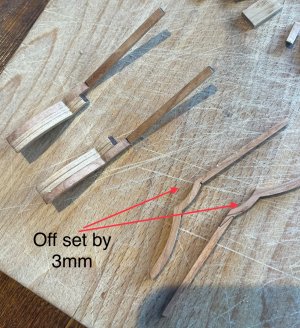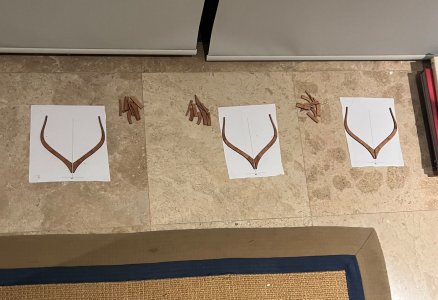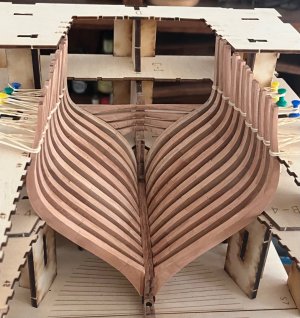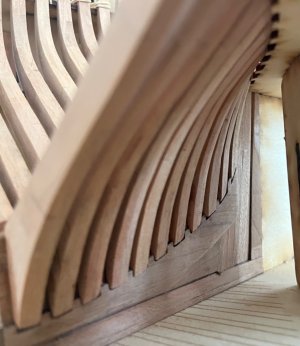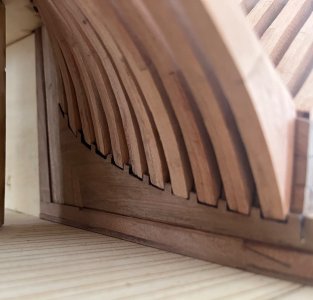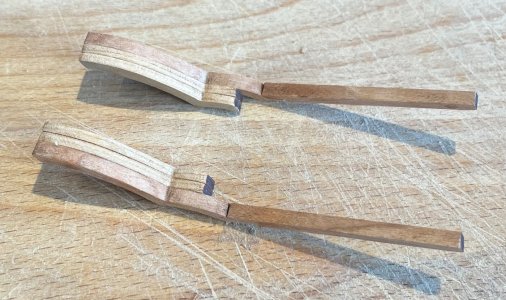I realize this is a translation issue, but are you writing about the material between scarfed pieces such as pieces of the keel? If yes, I wonder how folks here do this. I have used black tissue paper, ink, and paint with good results, but my favorite is to add a dot or two of brown acrylic paint to a small puddle of PVA glue to darken it. It does not take much paint at all and it does not weaken the strength of the glue.
View attachment 511327
Everything I have read indicates this "sealing: material is dark from the pine tar used to mix it together. but the following has me confused. From the contract for Aurora (28) 1776:
The Keel to be Elm, not more than 4 pieces 13½ ins square in Mids, sided afore 12 ins, & at the aft part of the rabbet of the post 10 ins. The Scarphs 3 ft 8 ins long, tabled one into the other, laid with white Flannel oakum bolted with Six Bolts 1 in diameter. The lips of the said scarphs not to be left more than 3⅞ in thick.
From the contract for a 74 of 1781
<Keel> ..........to be 1 feet 6 inches square in the midships, sided afore 1 feet 2 inches, and at the Aft Part of the Rabbet of the Post 12½ inches. The Scarphs 4 feet 6 inches long, tabled one into the other, laid with white Flannel or Kersey, and bolted with eight Bolts 1¼ inches in diameter. The Lips of the said Scarphs not to be left more n thickness than 5¼ inches.
I am assuming the pine tar used to make up the mixture would turn everything a dark color.











